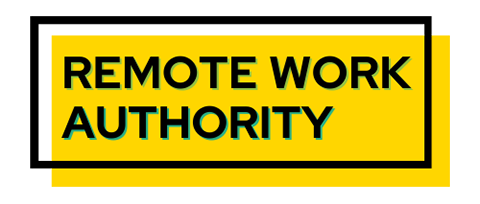Many people work part-time side hustles; however, some employers fear that those who work remotely may be spending company time at a full or part-time second job. This fear defies statistics and the reality of why people work extra jobs.
When times are tough, people sometimes work multiple jobs to pay their bills, afford college for their kids, meet medical expenses, prepare to buy a new car, or save for retirement. This has always been the way many people get by, but the popularization of remote work and the availability of affordable computers has made working side hustles even more common.
As noted in our previous article about over-employment, some employers may discourage or even forbid having side jobs. Their concerns are that working an extra side job might make them less alert or available for their full-time job or that they might disclose information to a competitor. Now, some employers are tying an abuse of side hustles to remote work.
Some Employers Discourage Side Hustles
Tobi Lütke, the CEO of Shopify, the e-commerce website builder for small businesses, said in a leaked internal memo that employees should devote their full attention to the company. Setting up a Shopify business of their own might be acceptable, but in general, many outside gigs interfere with the job. Shopify employee will have to disclose their side gigs.

This position raises many questions. Does an employer have control over an employee’s personal time? How can employees be denied the opportunity to make extra money? When is working multiple jobs unethical? What if the extra job has full-time hours?
In an era of remote work, these questions become even more critical. An employee could technically be using work time and resources to do a second job without a supervisor present, and someone could do the second job during company time and go undetected.
Is Working Two Jobs Widespread?
In fact, the Internet is full of stories about anonymous workers who balance two and even three full-time jobs during the pandemic. Dr. Gleb Tsipursky, a noted expert on hybrid work, sees this concern as a reflection of the mistrust of remote work. He cites statistics from FRED – Federal Reserve Economic Data – showing fewer than 438,000 or .27% of U.S. workers had two full-time jobs. The stats do not account for those with occasional or part-time gigs.
Remote work makes this easier by combining flexible hours with the time savings of not computing and engaging in office interactions. However, the stats show little difference in the percentages from 2020, when less than 5% of workdays were remote, versus 2022, when 40% were remote.
Tsipursky says that many executives see second jobs as detrimental while overlooking the fact that many people have always worked multiple full-time jobs. They think people are working for two companies during the same work hours or shortcutting the responsibilities of one position to perform another.
Opponents of remote work also overlook studies indicating that onsite workers may work less than 40% of the time and spend the rest doing non-work activities such as reading the news, getting on social media, making non-work-related phone calls, looking for other jobs, and chatting with coworkers.
Some workers may cross ethical lines by working multiple full-time jobs, but Tsipursky’s point is that the phenomenon is not new, not widespread, and not an excuse to spurn remote work. What is reported overstates the problem of people having multiple jobs.

What Is Wrong With Having A Side Hustle?
Aside from issues arising from mistrust of employees and the logistics of working multiple full-time jobs, employers may have other concerns that revolve around productivity, especially if the second job is full-time.
In some professions, such as firefighting, working a second full-time job is the norm, so long as the hours do not conflict with a firefighting shift. Not all employers are so accepting of their employees working even part-time jobs.
Some employers like Martha Stewart feel they should have control over an employee’s personal time and expect them to be available at all times. This attitude is out of sync with what most people want in a job. Employers like this don’t condone side jobs!
Most employers would not have a problem with someone cashiering at Walgreens, working as a wedding photographer, or writing a blog unless:
- The employee may come in too tired from a second job to give the required attention to the first job.
- They come in late, leave early, or take calls from the second job, which reduces their productivity.
- They are distracted by the second job.
- They use company resources such as phones, copiers, or computers to benefit the second job.
Here’s an example. In the novel For the Love of Friends by Sara Goodman Confina, the main character, a science writer for an organization, wrote a hilarious, stinging, and anonymous blog about the horrors of being a bridesmaid. She published it from work a few times, and one post went viral. Buzzfeed evaluated the IP address it came from and figured out who wrote it. The author was called into her boss’s office expecting to be fired. Her company’s website got a major influx of visitors, so she was not terminated, but she easily could have been for using company time and resources.
One of the most serious concerns that employers might have about employees having side hustles is that they may inadvertently pass along proprietary information, especially if they are working for a competitor. They could divulge company information or ways of doing things. To prevent this, some employers require workers to sign non-compete contracts or at least disclose their second jobs.
Benefits Of Side Hustles Extend To Employers
In 2022, 44% of Americans worked side hustles that brought in over $6,000 a year. According to a Lending Tree survey, those most likely to have side gigs are Gen Zers (62%) and millennials (55%), who need the extra income to keep up with inflation. This average figure is not enough to live on, so it is obviously periodic or part-time for most people.

Some reasons someone might want a side hustle include:
- If they like their job, but the money isn’t what they need, a second job can help them make ends meet until their pay increases or they get a better job.
- Some side hustles like delivering for Instacart or DoorDash help contractors earn in their spare time without a long-term commitment.
- When an employer cuts full-time jobs, employees with side hustles have a bit of protection until they get another job or their hours are restored. Some side hustles can become full-time for a while.
- Side hustles fill in resume gaps to fill time without a full-time job for a time and explain how certain skills were acquired.
- Trying a side hustle is a good way to experiment with working in another field.
- Someone starting a business might need a full-time job until it gets established.
- Side hustles utilize and develop additional transferable skills.
The job can use skills you have, like writing, accounting, or graphic design, or allow you to learn and develop new ones. You, not your employer, own your skills.
When you disclose side hustles to employers, they may not approve if the job is directly competitive, or it seems like it might take too much time from your position within them. Even if you don’t put the gig on your resume, you might mention it in an interview or disclose it if they ask to avoid trouble later.
Smart companies embrace the idea of side hustles, which make employees happy and empowered. Current employers often benefit from new skills, experiences, contacts, and insights gathered from another job.


